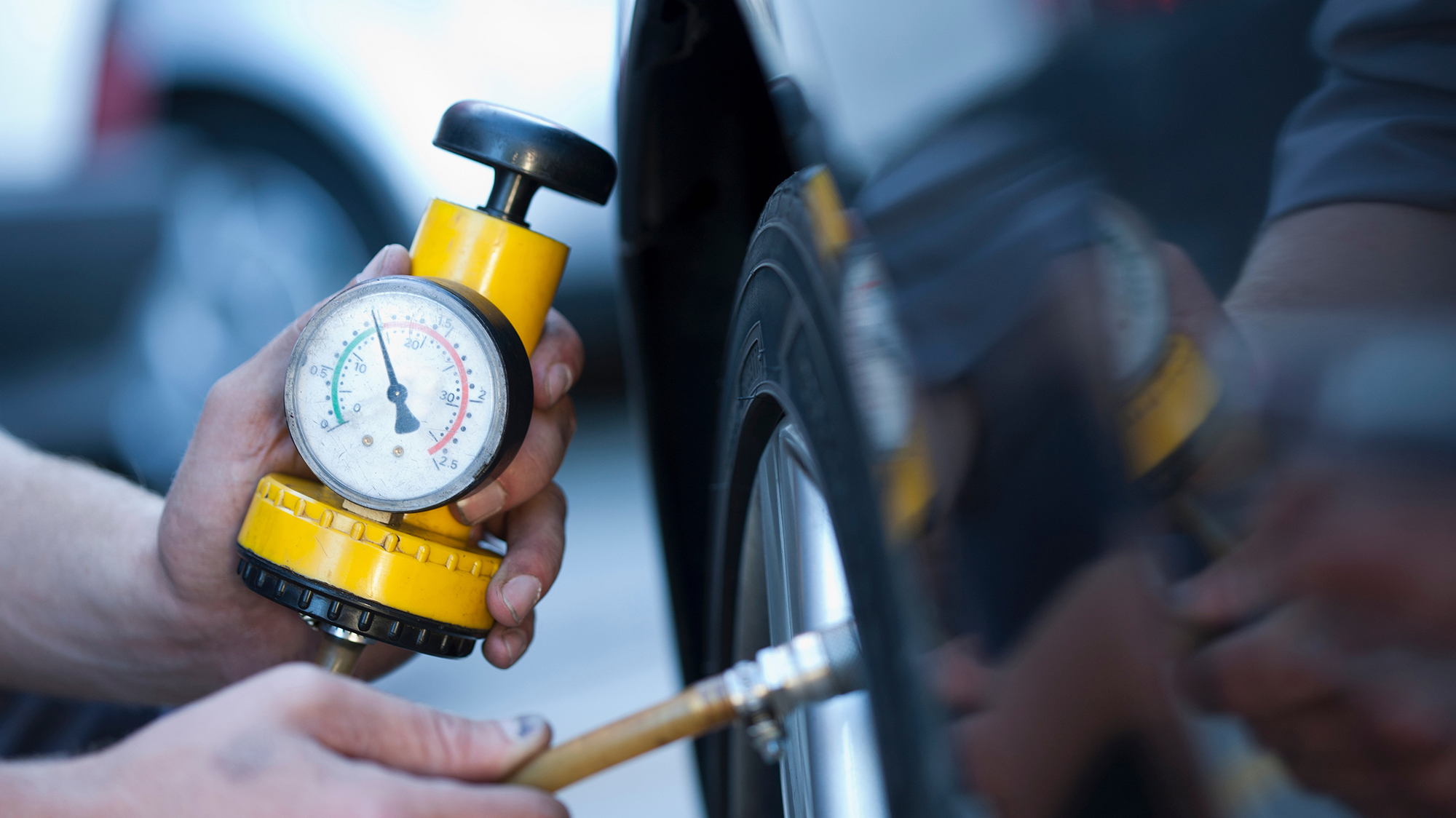Tire Inflation
When you maintain proper tire pressure, you ensure that you’ll get more life of your tires. On the other hand, improper tire inflation may result in rapid or irregular wear, which can cause significant internal tire damage, and can lead to sudden tire failure and result in serious injury.
Watch this how-to video to make sure you know how to check tire pressure so you can maintain the right level of pressure in your vehicle’s tires.
How Often Should You Check Tire Pressure?
You should check tire pressure at least once a month. Make it part of your monthly maintenance because on average, tires lose approximately 1 pound per square inch (PSI) of tire pressure every month. PSI refers to the minimum amount of air pressure needed to support your vehicle at its maximum load.
Tire pressure can also change drastically in winter temperatures. For every 10 degrees F change in ambient temperature, tire pressure will change by approximately 1 PSI. That’s why you always check pressure when the tires are cold, meaning they haven’t been driven for at least three hours. The U.S. Tire Manufacturers Association’s summary of the basic tire care essentials reiterates the importance of proper inflation.
Drivers who would like to have their tire pressure checked during National Tire Safety Week or ahead of a summer road trip are invited to visit any Bridgestone Retail Operations store – Firestone Complete Auto Care, Tires Plus, Hibdon Tires Plus; and WheelWorks;– for a free tire pressure check and tread assessment. Tire assessments and pressure checks are provided courtesy of all Bridgestone retail store teammates every day of operation, year-round.
What’s the best tire pressure tool?
Use a tire pressure gauge to make sure your tires have proper inflation pressure, and then fill your tires with air as needed. Many people mistakenly think that the correct inflation pressure is located on the tire’s sidewall. What’s listed on the sidewall is the maximum inflation pressure for the tire, but keeping your tires at the maximum PSI could make them wear faster or compromise your traction or braking abilities;

What Determines The Vehicle Manufacturer’s Pound Per Square Inch (PSI) Recommendation?
- Ride comfort and performance
- Load capacity
- Traction and Wear
- Fuel economy
It’s important to match your tire inflation pressure to the vehicle you are driving. Check for your tires’ recommended pressure on the driver’s side door jamb or in your vehicle owner’s manual. Also, be sure to check your tire pressure before you hit the road as your tires may read as having a higher psi after a long drive.
